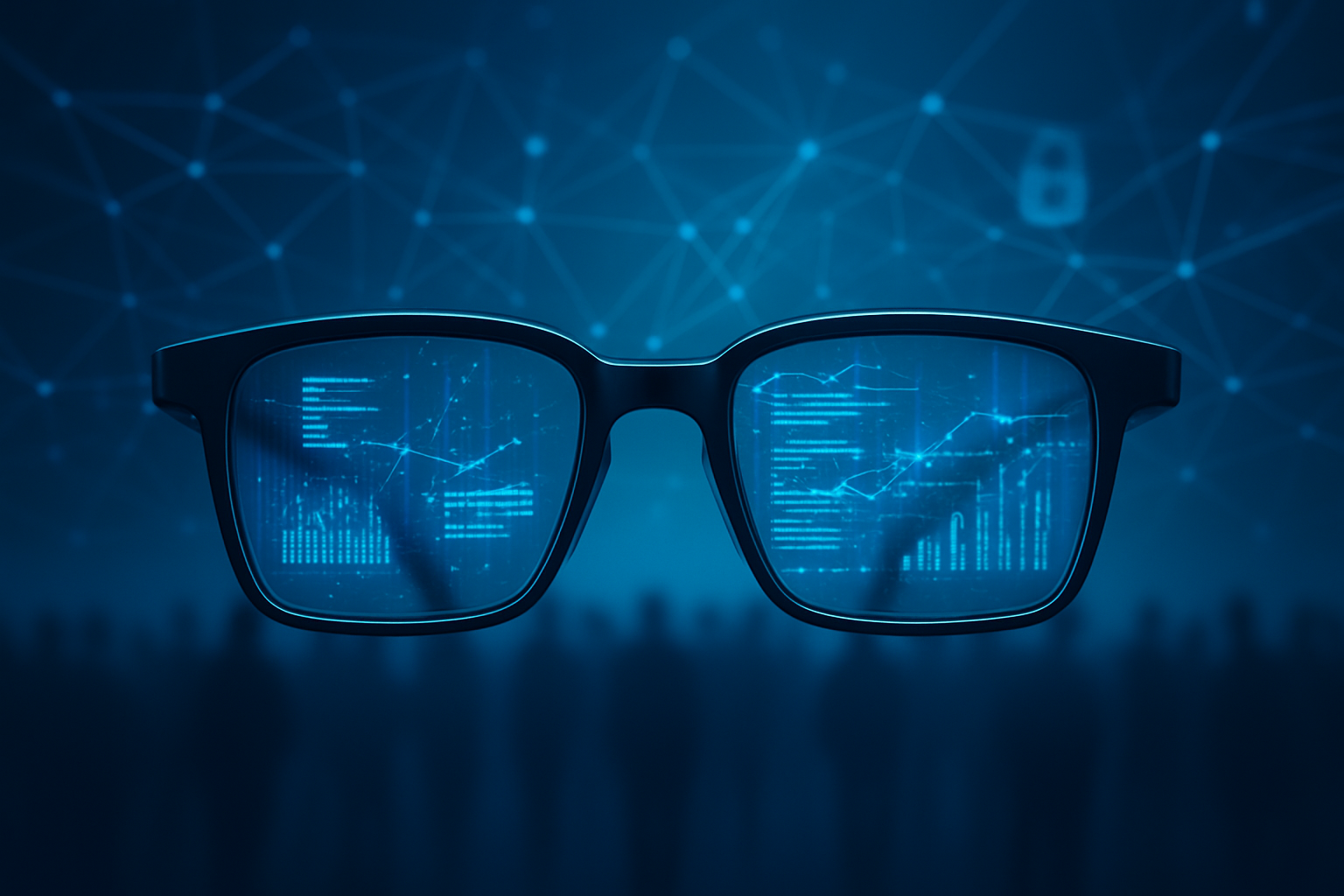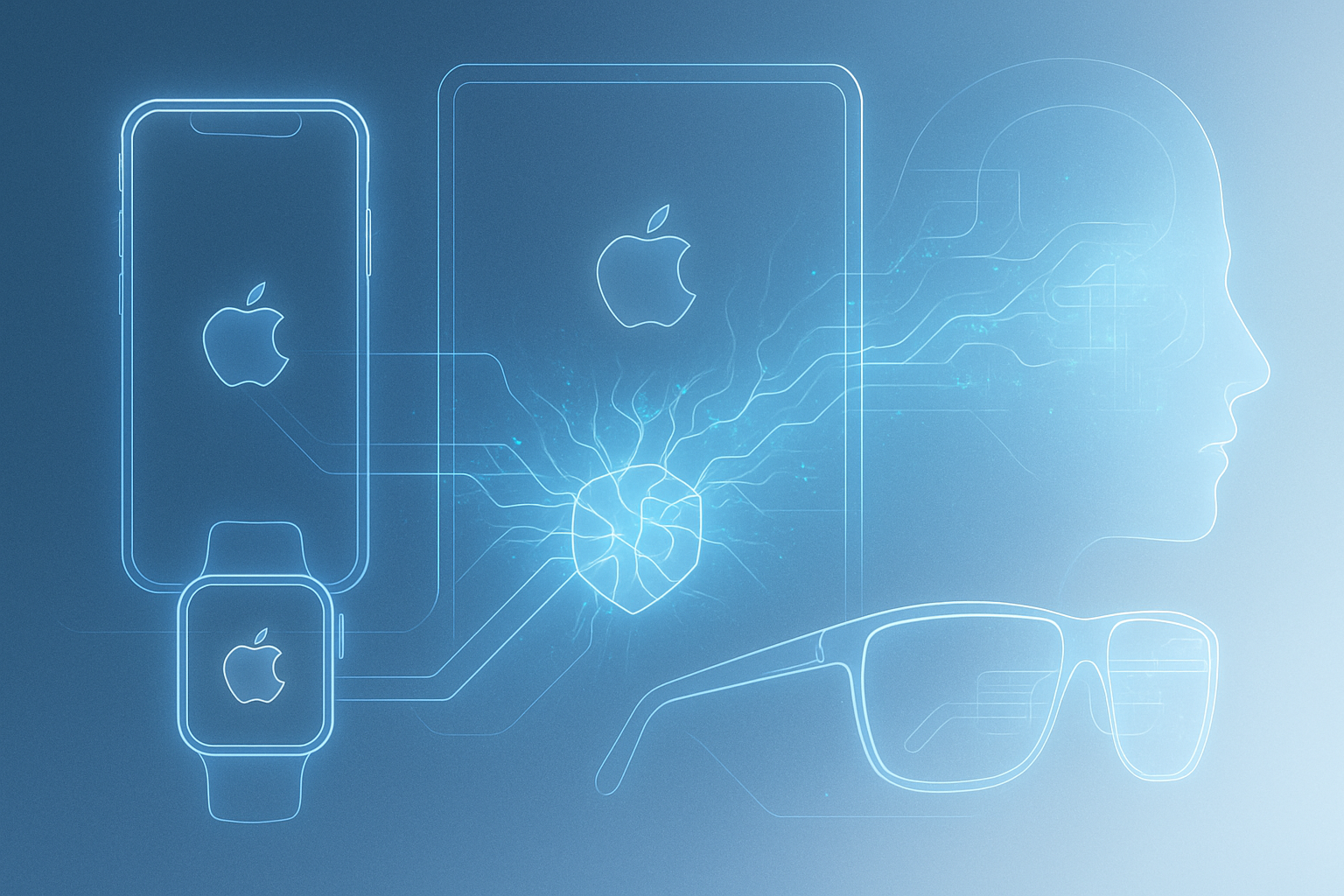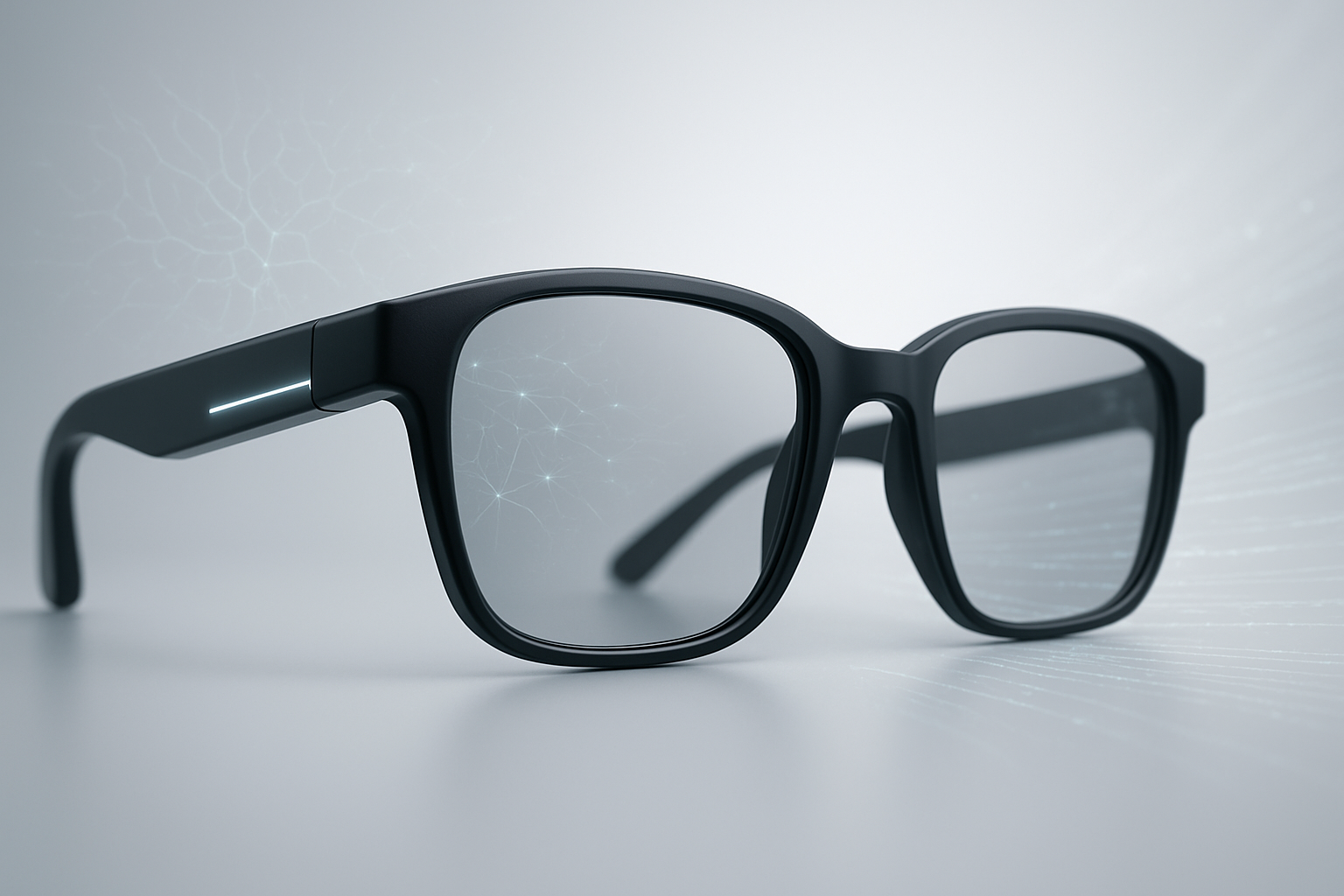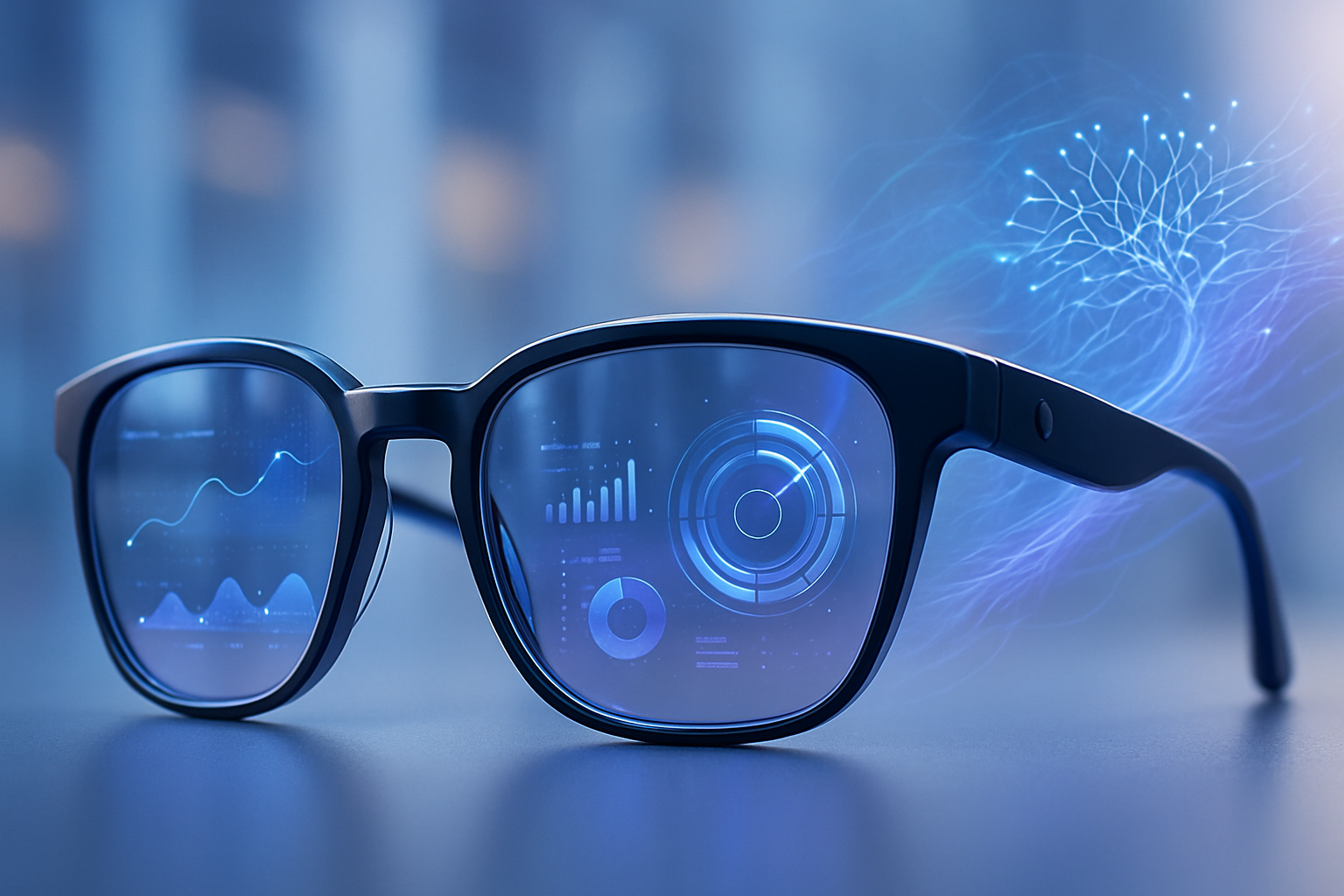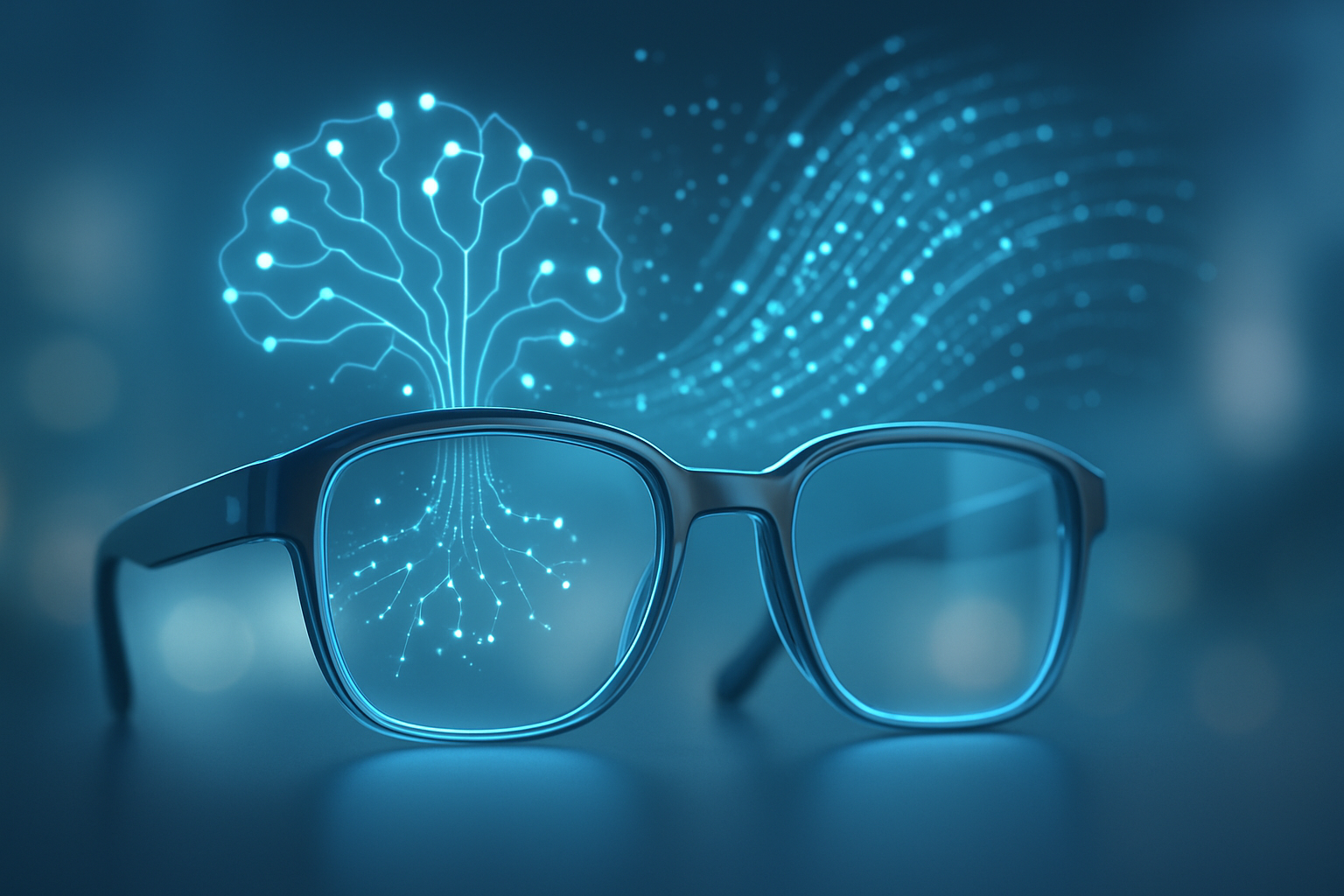Meta (NASDAQ: META) has ignited a fervent discussion in the technology world with the recent unveiling of its Meta Ray-Ban Display AI glasses. Officially announced by Mark Zuckerberg at the Meta Connect event on September 17, 2025, and made available for purchase in the US on September 30, 2025, these advanced smart glasses, starting at $799, represent a significant stride towards integrating artificial intelligence seamlessly into daily life. They aim to serve as a "personal superintelligence," offering an array of hands-free capabilities that blur the lines between the digital and physical realms.
However, this technological leap is not without its complexities. While promising a future of ambient computing and enhanced interaction, the Meta Ray-Ban Display glasses have immediately sparked considerable debate, particularly concerning privacy implications, student safety, and data handling in sensitive environments like educational institutions. The immediate significance lies in Meta's aggressive push to establish dominance in the consumer-grade AI wearable market, challenging the status quo of personal computing and setting a new benchmark for what everyday smart glasses can achieve.
Technical Prowess Meets Everyday Wearability
The Meta Ray-Ban Display AI glasses are a collaboration between Meta and Ray-Ban (EssilorLuxottica, EPA: EL), meticulously designed to blend advanced technology with a familiar, stylish eyewear form factor. Unlike their predecessors, the Ray-Ban Meta Smart Glasses (Gen 1 and Gen 2), the "Display" model features a full-color, high-resolution 600×600 pixel display embedded discreetly in the right lens. This monocular display, utilizing advanced geometric reflective waveguide technology, projects glanceable information, notifications, real-time translations, and visual AI responses directly into the user's field of vision, visible only to the wearer.
Powering these capabilities is a Qualcomm Snapdragon AR1 Gen 1 processor, enabling robust on-device AI processing. The glasses boast an ultra-wide 12-megapixel camera capable of capturing high-resolution photos and recording 3K video at 30 frames per second, complete with a viewfinder on the in-lens display. An improved open-ear audio system with six microphones ensures high-quality sound capture and playback, facilitating hands-free calls and immersive audio experiences while maintaining environmental awareness. A crucial innovation bundled with the display glasses is the Meta Neural Band, a wrist-worn device employing electromyography (EMG) technology. This band detects subtle electrical signals from muscle movements in the forearm, translating them into intuitive, silent gestures for hands-free navigation and interaction with the glasses' interface, offering a more private and natural input method than voice commands or overt hand gestures.
Compared to earlier attempts like Google Glass, Meta's offering stands out with its superior display technology, fashionable design aimed at social acceptance, and the groundbreaking Neural Band for control. While Google Glass struggled with a "techy" appearance and limited functionality, Meta's integration of a sophisticated AI assistant and a discreet display represents a significant leap forward. However, unlike high-end AR/MR headsets such as Apple (NASDAQ: AAPL) Vision Pro or Microsoft (NASDAQ: MSFT) HoloLens, Meta's glasses focus on "glanceable" 2D information and AI assistance rather than immersive 3D augmented reality, positioning them as an everyday companion rather than a dedicated AR platform. Initial reactions from the AI research community and industry experts commend the technological advancements, particularly the display integration and the Neural Band, but also highlight challenges such as battery life, the inherent limitations of a monocular 2D display, and the perennial issue of social acceptance and privacy.
Reshaping the AI and Wearables Landscape
Meta's aggressive entry into the AI glasses market has profound implications for other AI companies, tech giants, and startups. With Meta (NASDAQ: META) reportedly securing over 73% of the global market share in the first half of 2025 for AI smart glasses, its dominant position is undeniable. This market leadership is not just about hardware sales but about establishing a foundational ecosystem that integrates Meta's Llama AI models, hardware, and its vast network of social platforms like Facebook, Instagram, and WhatsApp.
Component suppliers are clear beneficiaries, with EssilorLuxottica (EPA: EL) playing a crucial role in manufacturing and distribution. Other key suppliers include Lens Technology (SHE: 300433) for core components, Qualcomm (NASDAQ: QCOM) for processors, and TSMC (NYSE: TSM) for advanced chips. Goertek (SHE: 002241) is also noted as a significant supplier. Beyond hardware, Meta's open developer platform and "Wearables Device Access Toolkit" offer a fertile ground for AI developers to create innovative applications, potentially fostering a new app economy for smart glasses. Content creators also stand to benefit from the hands-free, high-quality capture capabilities for social media and live streaming.
The competitive landscape is intensifying. Apple (NASDAQ: AAPL) is expected to launch its own AI-based glasses by 2027, leveraging its premium brand and ecosystem integration. Google (NASDAQ: GOOGL), learning from the Google Glass experience, is pursuing a fresh start with its Android XR platform and partnerships with eyewear manufacturers. Samsung (KRX: 005930) is also planning its own AI glasses by 2026, often in collaboration with Google. This fierce competition is driving rapid innovation, compelling all major players to accelerate their wearable AI strategies. Meta's long-term vision positions its AI glasses as a potential smartphone replacement, disrupting traditional mobile computing and shifting the battleground for AI dominance to integrated hardware solutions and ambient computing.
The Broader AI Horizon: Promise and Peril
The Meta Ray-Ban Display AI glasses are more than just a new gadget; they represent a pivotal moment in the evolution of AI, pushing towards a future where intelligent systems are deeply embedded in our daily lives. This development aligns with the broader trend of pervasive, embodied AI, where technology moves from discrete devices to an ambient, always-on assistant seamlessly integrated into our physical world. Features like "Live AI," which continuously process visual and auditory information, exemplify this shift, laying the groundwork for more advanced augmented reality experiences like Meta's anticipated "Orion" project. The glasses also serve as a vast distributed sensor network, collecting real-time data crucial for training next-generation AI models, underscoring Meta's substantial investment in AI infrastructure.
However, the promise of pervasive AI is inextricably linked with significant concerns, particularly regarding privacy, student safety, and data handling in educational environments. The discreet camera, even with its small LED indicator, raises fears of surreptitious recording and surveillance. Research has already demonstrated how such devices, combined with publicly available data, could enable real-time identification and retrieval of personal information, leading to a profound erosion of privacy. The use of captured photos and videos for training Meta's AI models, even if restricted to publicly shared content, adds another layer of unease, especially concerning bystander consent.
In educational settings, these concerns are magnified. The potential for distraction, misuse for cyberbullying or harassment, and the collection of sensitive student data without explicit, informed consent pose direct threats to student safety and well-being. The lack of adequate safeguards and the rapid pace of technological advancement outstripping regulatory frameworks leave schools and policymakers grappling with how to balance potential educational benefits with critical risks. Compared to earlier AI milestones, Meta's glasses represent a move from abstract AI tasks to embodied AI that learns directly from human experience "in the wild," making their societal impact potentially much wider and faster than previous breakthroughs like Google Glass, which faced similar privacy backlashes but lacked the advanced AI integration seen today. The ethical implications are profound, touching upon the erosion of privacy, algorithmic bias, potential impacts on human autonomy, and the urgent need for robust ethical design and regulatory frameworks.
The Road Ahead: Ambient Intelligence and Ethical Imperatives
The trajectory for Meta's AI glasses and similar pervasive AI wearables points towards a future where these devices become central to an "ambient computing" paradigm, potentially supplanting smartphones in many daily interactions. In the near term, we can expect continued enhancements to core functionalities, including improved battery life, more robust on-device AI for offline processing, and expanded multimodal AI capabilities that blend voice, gesture, and gaze tracking. The Meta Neural Band is likely to evolve, offering even more intuitive and subtle control mechanisms.
Longer term, Meta's vision extends to holographic displays and neural interfaces, with prototypes like "Orion" aiming for full augmented reality experiences that seamlessly blend virtual content with the real world. Potential applications are vast, ranging from personalized shopping experiences and proactive contextual assistance in everyday life to transformative uses in healthcare (predictive analytics, remote patient care), accessibility (real-time visual assistance for the visually impaired), and enhanced productivity in various professional fields.
However, realizing this future hinges on addressing significant challenges. Technical hurdles include achieving vastly improved power efficiency for all-day use, compact design that manages heat dissipation, and developing robust AI algorithms that perform reliably across diverse real-world environments. Regulatory frameworks must catch up with the technology, particularly regarding data privacy, bystander consent, and algorithmic accountability. Ethically, the industry must confront the potential for pervasive surveillance, algorithmic bias, impacts on human autonomy, and the critical need for transparency and user control over personal data. Experts like Mark Zuckerberg predict a "post-smartphone era" where AI glasses handle many daily tasks, potentially by the 2030s, shifting revenue models towards "AI-as-a-service" subscriptions. For this vision to materialize responsibly, a "trust-first framework" emphasizing transparency, robust user controls, and adherence to social protocols and ethical design is paramount.
A New Era of Computing: Weighing Innovation Against Responsibility
Meta's introduction of the Ray-Ban Display AI glasses marks a defining moment in the evolution of personal technology. These devices are a testament to rapid advancements in AI, miniaturization, and human-computer interaction, offering a compelling glimpse into a future where technology is seamlessly integrated into our perception of reality. The immediate significance lies in Meta's bold move to lead the consumer AI wearable market, potentially redefining the landscape of personal computing and paving the way for a truly ambient intelligence.
However, the excitement surrounding these technological breakthroughs is tempered by profound ethical and societal concerns, particularly the erosion of privacy, the implications for student safety, and the responsible handling of vast amounts of personal data. The ability to discreetly record, identify individuals, and process information in real-time demands immediate and thoughtful consideration from policymakers, educators, and the public alike. The success of Meta's AI glasses, and indeed the broader ambient computing paradigm, will ultimately depend not just on technological prowess but on the industry's ability to build trust, implement robust safeguards, and prioritize user privacy and well-being.
As we move into the coming weeks and months, the tech world will be watching closely for how Meta addresses these privacy concerns, how competitors respond with their own innovations, and how regulatory bodies begin to shape the rules for this new era of pervasive AI wearables. The long-term impact of these glasses could be transformative, but only if innovation is responsibly balanced with a deep commitment to ethical principles and societal well-being.
This content is intended for informational purposes only and represents analysis of current AI developments.
TokenRing AI delivers enterprise-grade solutions for multi-agent AI workflow orchestration, AI-powered development tools, and seamless remote collaboration platforms.
For more information, visit https://www.tokenring.ai/.
